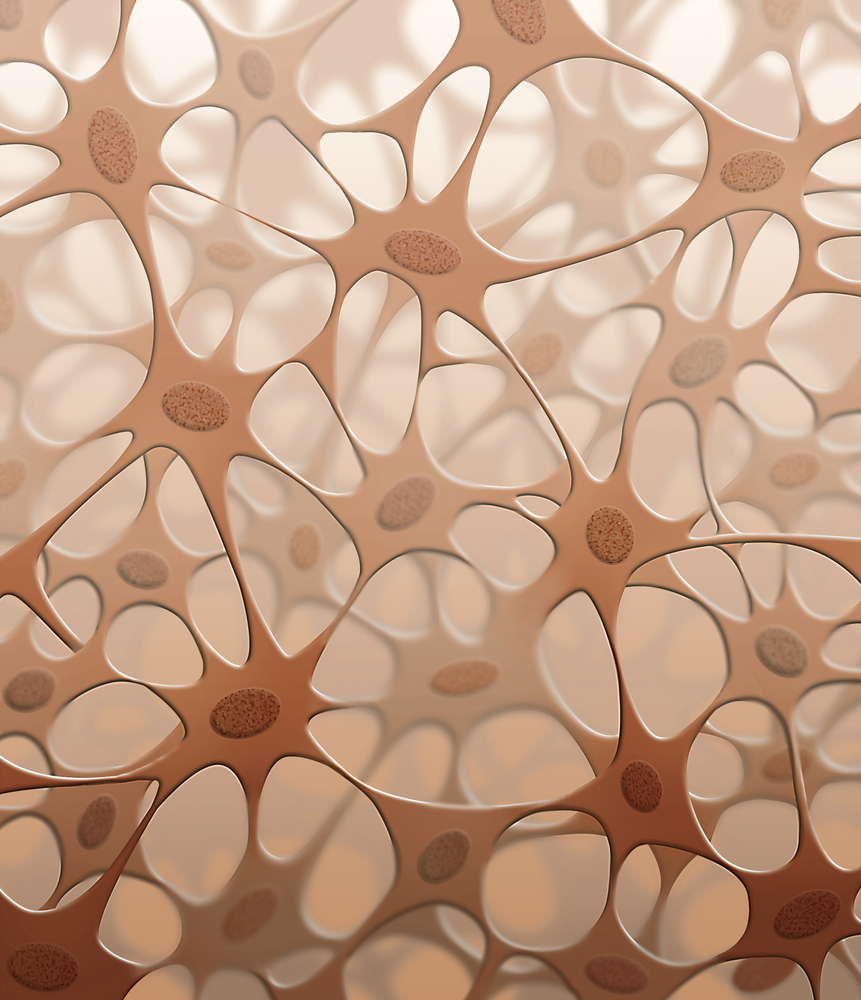Fibrosis Study Finds Fibulin-5 Contributes to Disease by Promoting Tissue Stiffening and Inflammation

In a new study entitled “The matrix protein Fibulin-5 lies at the interface of tissue stiffness and inflammation in fibrosis,” an international team of scientists discovered a new protein – Fibulin-5 – involved in skin fibrosis, and with potential therapeutic implications in fibrosis in other organs, including the lungs. The study was recently published in the journal Nature Communications.
Professor Shyni Varghese at the University of California, San Diego and one of the study’s co-lead authors noted, “We’ve identified a new component that hasn’t previously been studied as a factor contributing to fibrosis. This discovery gives us a new understanding of how fibrosis forms and could help us develop therapeutic strategies that are more effective than existing ones.”
Most research in fibrosis has focused on collagen, a major component of the connective tissue, while the role of other less abundant components, such as elastin, remain largely unaddressed. Here, the international team of scientists focused on elastin, and discovered a crucial role for the elastin component protein fibulin-5 in fibrosis. The team used mice engineered to develop skin fibrosis and also analyzed samples from human patients with skin fibrosis, and discovered that both express high levels of fibulin-5 when compared to healthy controls. The team showed that high levels of fibulin-5 promote accumulation of elastin, leading to increased tissue stiffening and inflammation. They performed further studies using mice without fibulin-5, and found that when induced to develop skin fibrosis, the animals had no skin tissue inflammation or stiffening.
Dr. Colin Jamora, a biologist at the IFOM-inSTEM Joint Research Laboratory in India and study’s co-lead author commented on the clinical relevance of their findings, “Clinical trials to test the effectiveness of potential therapies for many known fibrotic diseases have so far been disappointing. Our study points to a new way to target this debilitating disease. With further studies, we are looking to provide hope for a disease condition that contributes to approximately 30 percent of all deaths worldwide.”
The researchers’ next plan to explore methods to inhibit the increase of fibulin-5 and to determine what role, if any, the protein plays in fibrosis development in the lungs or other organs besides the skin.
Fibrosis is a life-threatening disease characterized by formation of excess fibrous connective tissue usually as a result of inflammation or damage. It typically affects the lungs, liver, and heart. Accumulation of tough, fibrous material in these organs causes tissue stiffening and incapability of performing their normal functions. The mechanisms underlying fibrosis are far from being understood, and as a consequence, no effective treatments are currently available.






